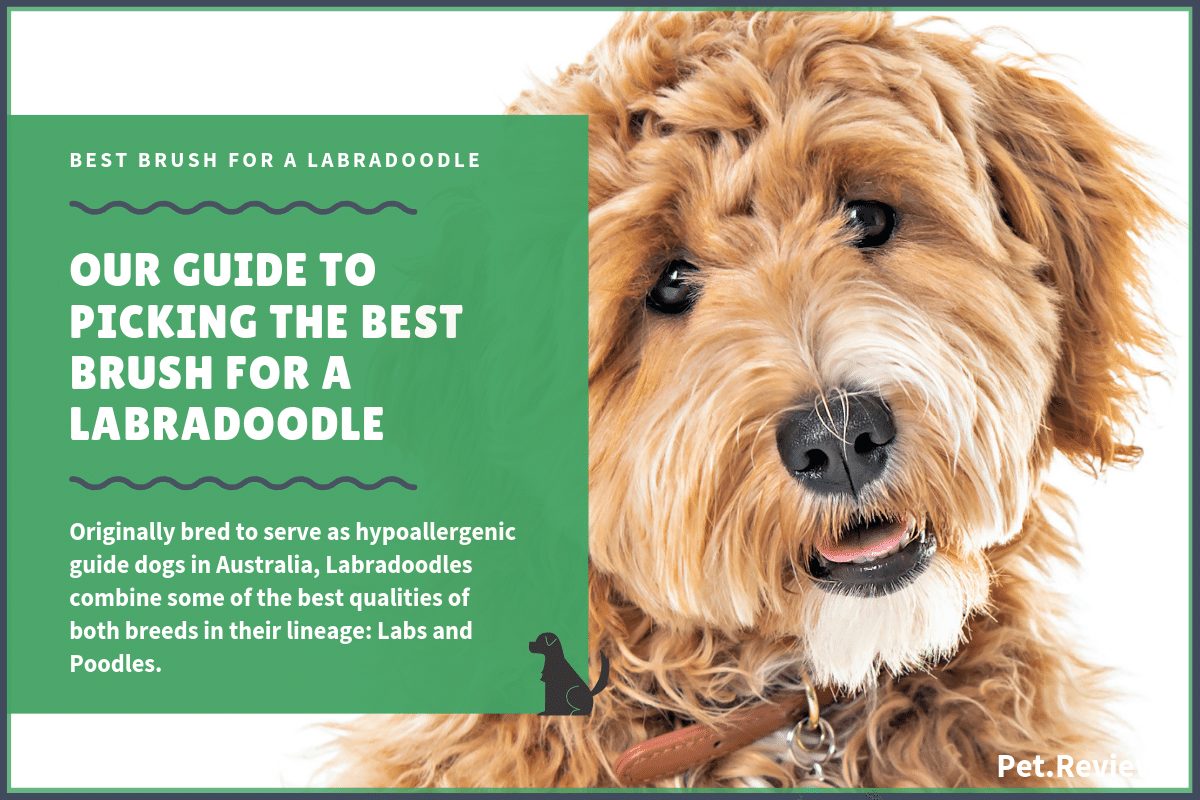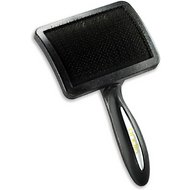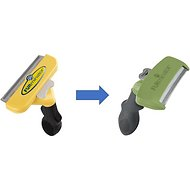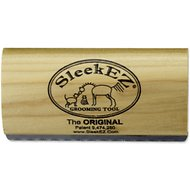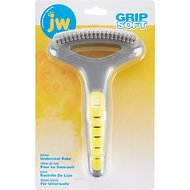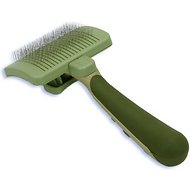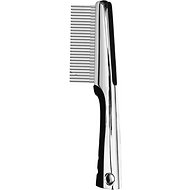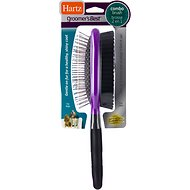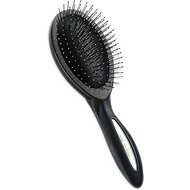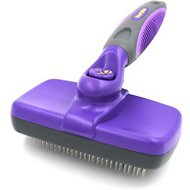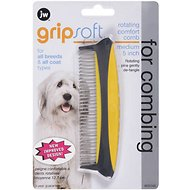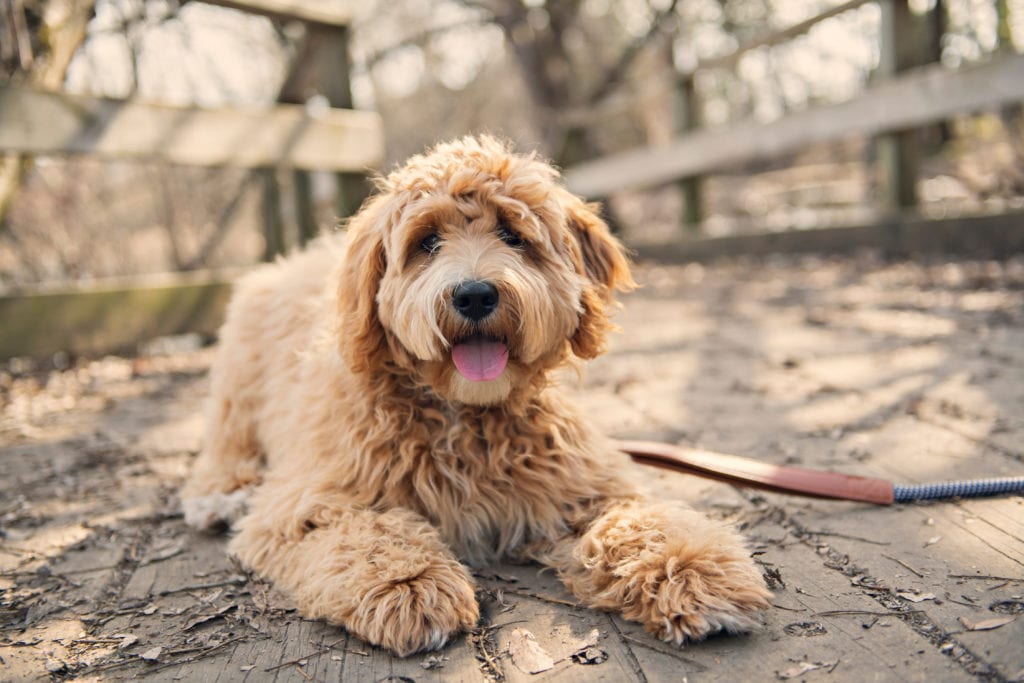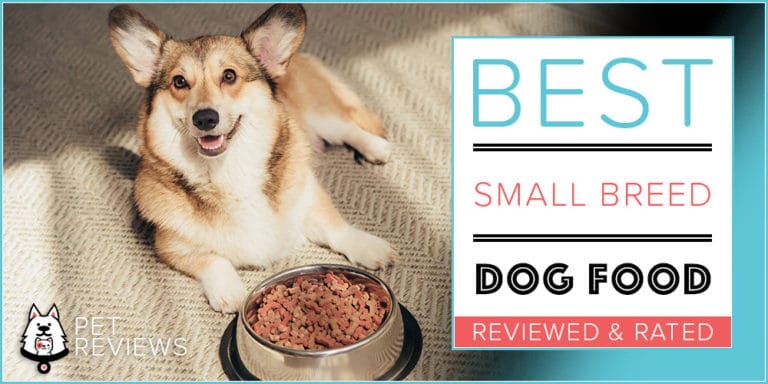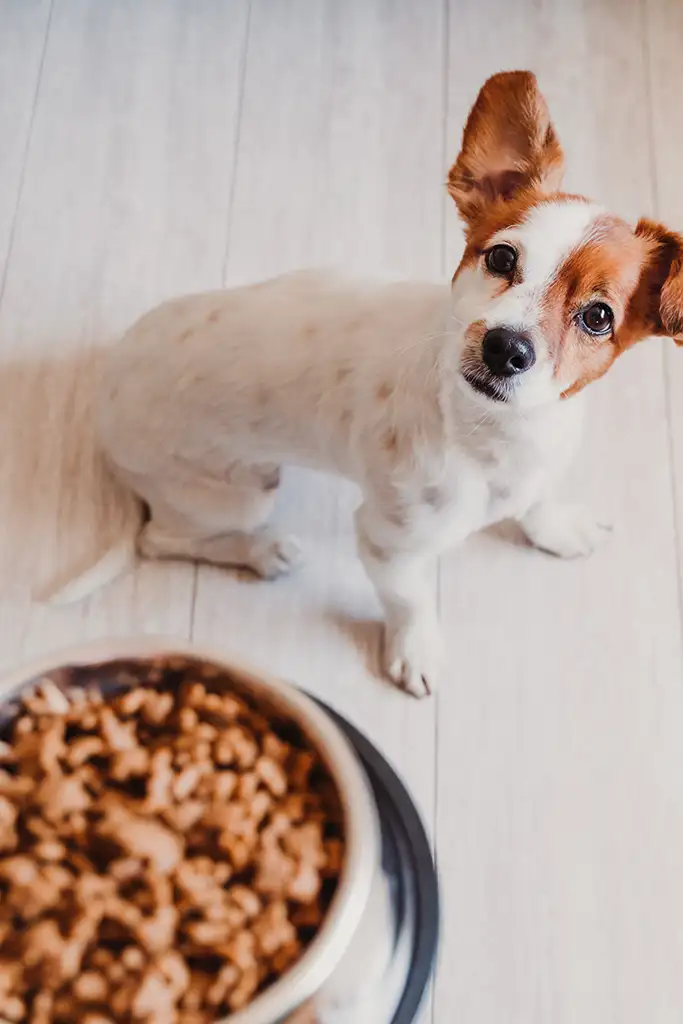10 Best Brushes for Labradoodles: Our 2024 Labradoodle Brush Guide
Quick Guide
Originally bred to serve as hypoallergenic guide dogs in Australia, Labradoodles combine some of the best qualities of both breeds in their lineage: Labs and Poodles.
This designer breed is energetic and good natured, making them ideal pets for families and homes with multiple animals. Labradoodles are not strictly hypoallergenic, though they do shed a great deal less than most other breeds due to their Poodle genes.
While shedding is not a great concern for Labradoodle owners, their unusual coats present a set of difficulties all their own. Coming in several different varieties, Labradoodle coats have a tendency to tangle, mat, and cling on to debris. Because of this, it is critical to their overall well-being that Labradoodles are brushed regularly.
Because their coats are so unique, many people have no idea where to start when looking to buy a brush for their Labradoodle. If you fall into that category, this guide is for you! We will go over some of the brush types commonly used for Labradoodles, discuss coat variations within the breed, and list our top picks for Labradoodle brushes!
Read on for all the information you could need before selecting a brush for your pup!
What is the Best Brush for a Labradoodle?
- Andis Premium Large Firm Pet Slicker
- FURminator deShedding Edge Dog Brush
- SleekEZ Deshedding Grooming Tool
- JW Pet Gripsoft Double Row Undercoat Rake
- Safari Self-Cleaning Slicker Brush for Dogs
- Resco Pro-Series Rotating Dog & Cat Pin Comb
- Hartz Groomer’s Best Combo Dog Brush
- Andis Premium Large Pin Pet Brush
- Hertzko Self-Cleaning Dog & Cat Slicker Brush
- JW Pet Rotating Comfort Comb
Different Types of Labradoodle Brushes
Different Labradoodle coat types require different brush types, but these are the categories that you will most often see used for this breed.
- Slicker brush — This brush is a crucial component of the brushing routine for any Labradoodle. It is comprised of many fine wire bristles (which may either be stiff or flexible) attached to a broad brush head. This type of brush painlessly works through tangles and mats in coarser, curly coats like a Labradoodle’s.
- Comb — Another great option for Labradoodle coats, combs are especially useful in more tender areas, like your dog’s face. They are usually made of metal with wide, sturdy teeth that won’t buckle under the pressure of some more gnarly tangles.
- Pin brush — If you picture a human hair brush, you’re likely picturing this brush type. It actually works quite well even for Labradoodles’ sometimes wiry hair, as the pins gently work through knots in the fur without snagging them.
- Undercoat rake — These are not all that commonly used for Labradoodles as they’re not big shedders in the first place, but they can help mitigate what little shedding your pup may do. They usually consist of one row of strong, spaced out teeth that are long enough to reach the undercoat, which is the primary cause for shedding.
- Shedding brush — Though this brush type is also less common for Labradoodles, it is never a bad idea to have one on hand. Shedding brushes do an excellent job of picking up loose fur from anywhere in the coat with their fine, shallow teeth. You won’t find any dog hair in your home if you use one of these regularly.
Different Types of Labradoodle Coats
Though there are some similarities between all Labradoodle coat types (like the fact that they’re generally long, thick, and coarse), there are distinct differences between each type as well, which we will discuss here.
- Wavy (Fleece) — Most commonly, Labradoodles will have this type of coat. Also referred to as shaggy, fleece is the descriptor most breeders use when discussing this coat. This type denotes a relatively even mixture of Lab and Poodle in a dog’s lineage, and is probably the easiest coat type to care for. These coats are quite soft for being so coarse and dense, and they shed very little, if at all.
- Curly (Wool) — Though less common than the first type, curly or wool coats are not uncommon in Labradoodles. These more closely resemble Poodle coats, and will require more frequent brushing because they are prone to matting very quickly. The good news is that if your Labradoodle has this type of coat, it likely does not shed at all.
- Straight (Hair) — The least common of the three types, Labradoodles with straight coats will shed much more than the other two types. This means that if your dog has a straight coat you will want to make sure to clear out their undercoat on a regular basis.
Our Top Picks for Labradoodle Brushes
Now that we have had a chance to go over all of the relevant background information, we will begin talking about our favorite brushes for Labradoodles!
| Our 2024 Picks: Best Brush for Labradoodles | |||
Andis Premium Large Firm Pet Slicker
|
CHECK PRICE | ||
FURminator DeShedding Edge Dog Brush
|
CHECK PRICE | ||
SleekEZ Deshedding Grooming Tool
|
CHECK PRICE | ||
JW Pet Gripsoft Double Row Undercoat Rake
|
CHECK PRICE | ||
Safari Self-Cleaning Slicker Brush For Dogs
|
CHECK PRICE | ||
Resco Pro-Series Rotating Dog & Cat Pin Comb
|
CHECK PRICE | ||
Hartz Groomer’s Best Combo Dog Brush
|
CHECK PRICE | ||
Andis Premium Large Pin Pet Brush
|
CHECK PRICE | ||
Hertzko Self-Cleaning Dog & Cat Slicker Brush
|
CHECK PRICE | ||
JW Pet Rotating Comfort Comb
|
CHECK PRICE | ||
Andis Premium Large Firm Pet Slicker
Key Benefits:
- Wide brush head with fine wire bristles
- Removes dirt and debris along with tangles and mats
- Can help thin out any loose fur
- Costs less than $9
Overall Best Brush for a Labradoodle —It will come as no surprise to experienced Labradoodle owners that a slicker brush tops our list of favorites. These brushes are ideal for the unusual Labradoodle coat, and this one does triple duty of brushing out knots and mats, cleaning fur, and snagging any loose hair that may be hiding in your dog’s coat. Not to mention, it’s extremely affordable.
Pros:
- Fine wire bristles are ideal for Labradoodles
- Cost effective
- Has added benefits of cleaning and thinning fur
Cons:
- Can be difficult to remove whatever loose fur the brush collects
- Bristles are quite tough
FURminator deShedding Edge Dog Brush
Key Benefits:
- Comes in 3 sizes and 2 hair length options
- Has protective edge so dogs’ skin is safe
- Recommended by 97% of reviewers
- Button release makes hair collection easy
Best Shedding Brush for Labradoodles — Though most Labradoodles won’t need a dedicated shedding brush, this one is a great option for those that do experience a significant amount of shedding. The fine metal teeth will sift through both layers of your dog’s coat to collect any loose fur that would eventually wind up in your home, and there are several sizes to choose from.
Pros:
- Safe for your dog’s skin
- Easy to collect and remove fur
- Good range of sizing options
Cons:
- Not that necessary for most Labradoodles
- More expensive than many other brushes
SleekEZ Deshedding Grooming Tool
Key Benefits:
- Brushes away dirt and dander in addition to fur
- Can also be used to remove fur from household surfaces
- Simple, comb-like design
- Available in 3 sizes
Best Deshedding Tool for Labradoodles — This tool looks much different from most like it; the handle is broad and wooden, and the teeth are a small metal attachment that peek out from the bottom. This means that the tool is easy for you to hold on to as you run it through your Labradoodle’s fur. This tool is especially good for Labradoodles (who do not generally shed much) because it works to remove dander and dirt as well as fur.
Pros:
- Removes more than just loose fur
- Smooth handle, easy to hold on to
- Multiple sizing options
Cons:
- Probably not that necessary for most Labradoodles
- Small teeth may not reach the undercoat
JW Pet Gripsoft Double Row Undercoat Rake
Key Benefits:
- Non-slip grip handle makes it easy for owners to use this brush
- Teeth are positioned for maximum comfort and safety
- Double rows allow you to trap more fur
- Works best on long fur
Best Undercoat Rake for Labradoodles — An undercoat rake won’t be a must-have for Labradoodles with wavy or curly coats, but straight coated Labradoodles absolutely need this brush. It helps prevent shedding by grabbing all of the loose and dead fur from the undercoat without causing any sort of discomfort for your dog.
Pros:
- Two rows of teeth rather than one
- Blunt teeth ensure safety and comfort
- Grip handle makes using this brush easy
Cons:
- Not too necessary for most Labradoodles
- Teeth may not be long enough to reach all of the undercoats
Safari Self-Cleaning Slicker Brush for Dogs
Key Benefits:
- Button on back releases hair collected in the brush
- Gentle, flexible metal bristles
- Comfortable for your dog
- Eliminates extra fur in addition to clearing knots and mats
Best Slicker Brush for Labradoodles —This slicker brush from Safari features many small wire bristles, which can be cleaned with just the press of a button. This function adds a level of extra convenience to a brush that is already very well-equipped to meet the needs of a Labradoodle coat by gently brushing out tangles.
Pros:
- Self-cleaning adds value and convenience
- Wire bristles are well-suited to Labradoodle coats
- Serves 3 functions: cleaning, detangling, and thinning
Cons:
- Cleaning button sometimes breaks
- Wires may get bent
Resco Pro-Series Rotating Dog & Cat Pin Comb
Key Benefits:
- Stainless steel pins and metal handle
- Designed for long coats
- Pins rotate 360 degrees for painless grooming
- Has an actual handle, unlike most combs
Best Comb for Labradoodles —Don’t neglect your Labradoodle’s shaggy face during your brushing sessions—this comb is perfect for cleaning up the fur in those sensitive areas. The rotating teeth prevent uncomfortable tangling for your pup, and the handle makes it easy for you to control where your comb goes.
Pros:
- Ideal for brushing the facial area
- Rotating teeth maximize comfort
- Sturdy metal construction
Cons:
- Teeth may be too wide to remove some knots
- Over time, teeth may bend at the joint
Hartz Groomer’s Best Combo Dog Brush
Key Benefits:
- Double-sided brush head
- Specifically good for long, curly coats
- Safety-tipped stainless steel pins
- Costs less than $7
Best Pin Brush for Labradoodles —Pin brushes are excellent for Labradoodle coats as they move through them without snagging, gently brushing out tangles as they go. This brush is equipped with a double-sided head: pins on one side, nylon bristles on the other. Through bristle brushes aren’t commonly used for Labradoodles since their coats aren’t meant to look shiny, you can always give your dog a once-over with one at the end of your routine to add some softness.
Pros:
- Double-sided head adds value
- Safety tips ensure your dog’s comfort
- Very cost effective
Cons:
- Nylon bristles aren’t all that useful for Labradoodle coats
- Tips may pop off of pins
3 More Top Rated Labradoodle Brushes
You can never have too many options when it comes to your pet! Here are a few more brushes that didn’t quite make it on to our list of absolute favorites for Labradoodles, but that are still excellent choices.
Andis Premium Large Pin Pet Brush
Key Benefits:
- Works to remove tangles and dirt
- Safety-tipped pins
- Great finishing touch to give Labradoodle fur a nice bounce
- Spread out pins ensure comfort
Another excellent pin brush, this one comes without anything extra, but it gets the job done. The sparsely spread pins and the rubber material mean that your Labradoodle will be comfortable as you use this brush; it is a great way to round out your grooming routine.
Pros:
- Comfortable for your dog
- Gives Labradoodle fur a clean, healthy look
- Can reach through thick fur
Cons:
- Rubber backing may eventually detach
- Not effective for more serious knots and mats
Hertzko Self-Cleaning Dog & Cat Slicker Brush
Key Benefits:
- Retractable teeth offer easy cleaning
- Sturdier than average slicker bristles
- Eliminates tangles while keeping your dog comfortable
- Comes in 2 sizing options
Yet another slicker brush, this one comes equipped with a self-cleaning function by way of retractable bristles. The bristles themselves are more solid and thicker than most slicker brush bristles, so they are sure to hold up well against a Labradoodle’s difficult coat.
Pros:
- Self-cleaning option adds value
- Strong bristles won’t bend in coarse fur
- Reaches all layers of fur (even on straight coats)
Cons:
- More expensive than most other slicker brushes
- Stiff bristles may not be as comfortable
JW Pet Rotating Comfort Comb
Key Benefits:
- Comes in two teeth options for different coat types
- Rotating teeth add comfort
- Costs just $2.50
- Will work for any coat type (including the 3 Labradoodle types)
This is another great comb for tackling the sensitive fur on your Labradoodle’s face. With two different teeth options and a comfort grip handle, this comb is sure to make one of the most nerve-wracking parts of the grooming process easier on both you and your dog.
Pros:
- Highly affordable
- Works for any of the Labradoodle coats
- Rotating teeth ensure no snagging or discomfort
Cons:
- May feel too small to some owners
- Will not hold up to mats
6 Tips for Brushing your Labradoodle
Brushing your Labradoodle probably isn’t all that fun for you or your dog, but we’ve put together six tips to make it a little easier and more enjoyable for both of you.
- Start from the back — Start with the less sensitive areas and work your way forward when brushing your Labradoodle to make them more comfortable and ease them into the process. Short, gentle strokes are best to ensure you don’t hit an unexpected tangle and cause your pup pain. By the time you reach their face, your dog will (hopefully) have settled into the process a little bit.
- Check high friction areas — Though you probably only need to brush your Labradoodle about once a week (depending on their coat type), try to check areas like underneath their collars and around their ears every few days for knots that could develop quickly into mats. This will save you extra work in the long run; plus, your dog is certain to prefer multiple painless brushing sessions over a single uncomfortable one when a mat forms.
- Reward your Labradoodle — These sweet pups love to engage with their owners, so you will make them much for willing to receive a brushing if you offer them a reward after it’s over with. Whether it’s with a special treat or a few minutes of dedicated play time, let your Labradoodle know that brushing is a positive experience. After doing this for a while, you will probably find that your pup isn’t too resistant to being brushed anymore.
- Make it a routine — Pick a day of the week and make a conscious decision to brush your Labradoodle on that day every week. After a little time passes, it will become second nature and will feel like less of a chore for both you and your dog. Additionally, dogs thrive on routine, so making grooming part of yours will help your dog accept the brushing.
- Brush after outside play — Most Labradoodle coats have a tendency to pick up dirt and foreign objects while they play; if these are left unattended, they can contribute to knots and mats. Things like burs, sticks, and clumps of dirt can all be culprits behind nasty mats. Give your Labradoodle a quick brushing after outside play to ensure you don’t wind up with a mess on your hands later down the line.
- Use more than one brush — Labradoodle coats require special attention, and different types of brushes are appropriate for different parts of their bodies and different stages of the brushing process. For example, a slicker brush is a great first line of defense when brushing out Labradoodle backs and legs, but a comb is a better option for their faces, and a pin brush is a good way to round out your grooming sessions. If you’re looking to give your dog, a coat that appears healthy and beautiful, using multiple brushes is your best bet.
FAQs Regarding Brushes for Labradoodles
If you have never had a Labradoodle before, you may still be feeling a little lost in terms of grooming them. That’s why we have answered some of the most commonly asked questions about Labradoodle brushes here!
- How often should I brush my Labradoodle? As a general rule, you should brush your Labradoodle once a week. If your dog has a very curly or very straight coat, though, it may need to be more often. Curly coats have a tendency to mat and tangle; straight coats are prone to shedding. You can prevent either of these issues by making an effort to brush your Labradoodle a few times a week.
- What kind of brush is best for Labradoodles? The overall best brush for a Labradoodle is the slicker brush, but there are a few caveats to that generalization. The slicker brush is not a good option to brush out your Labradoodle’s shaggy face, and it is also not the best choice if your pup has a straight coat and you want to prevent shedding. It is great for comfortably eliminating tangles in most Labradoodles’ coarse, wavy fur.
- Do Labradoodles shed? This depends on their coat type. Most Labradoodles shed very little, if at all, but those with straight coats will shed more often. If your dog has a wavy or curly coat, shedding should not be much of a concern for you.
- How do you brush a Labradoodle? Every dog is different, so it is hard to give one size fits all advice about brushing a Labradoodle. However, a good general outline to follow is: start with your slicker brush at your dog’s back and work your way forward in short, gentle strokes. Then grab your comb to brush out your dog’s facial hair. Finally, use the pin brush to give your Labradoodle’s coat a nice clean bounce. If your pup has a straight or curly coat, this routine would need adjusting.
Hopefully, these answers take care of your more burning questions regarding brushing your Labradoodle!
Conclusion
Most everything about owning a Labradoodle is easy: they’re trainable, friendly, and loyal. The one downfall to this breed is maintaining their unusual (and often unruly) coats. However, brushing your Labradoodle does not have to feel like a chore.
Shop this guide for the best possible brush for your Labradoodle, and you’ll see how much easier the grooming process becomes!

